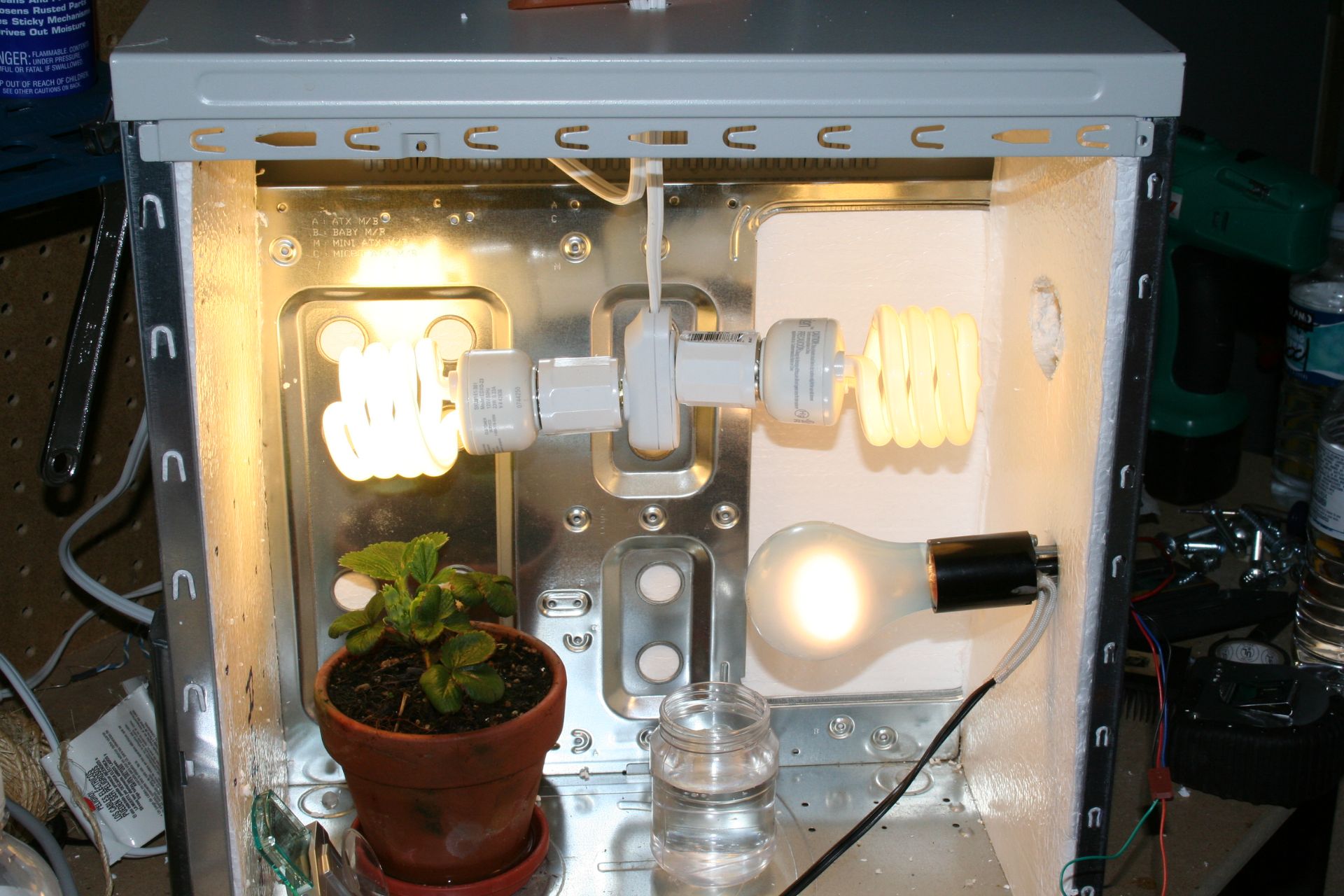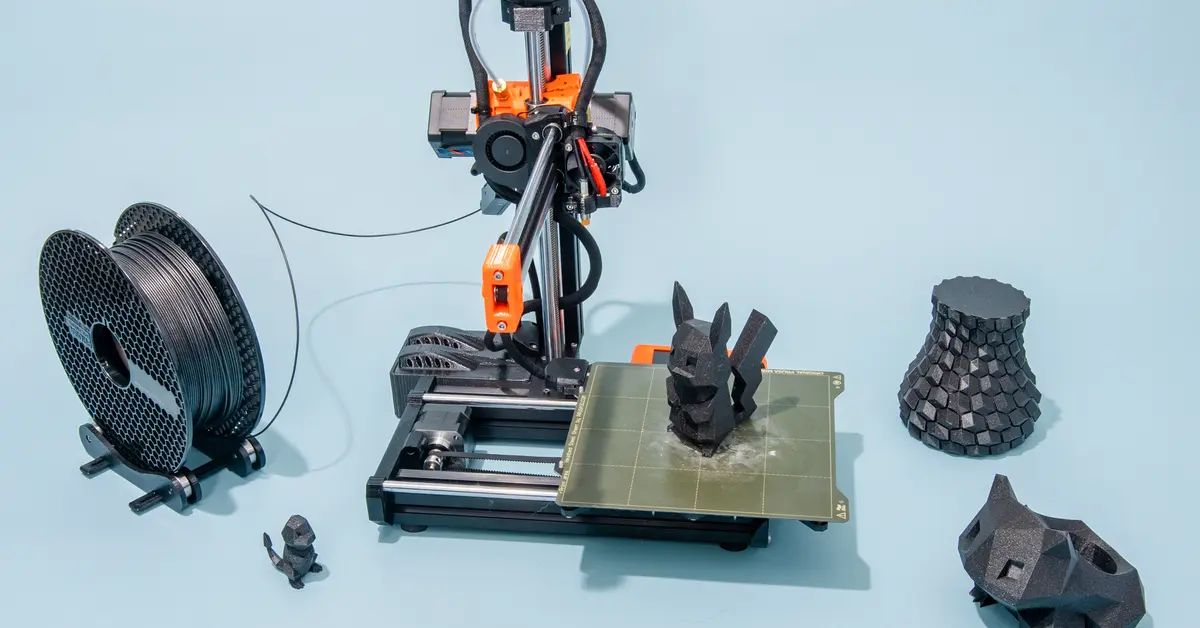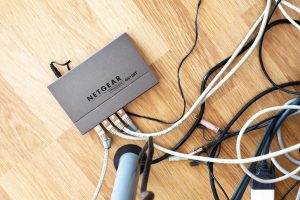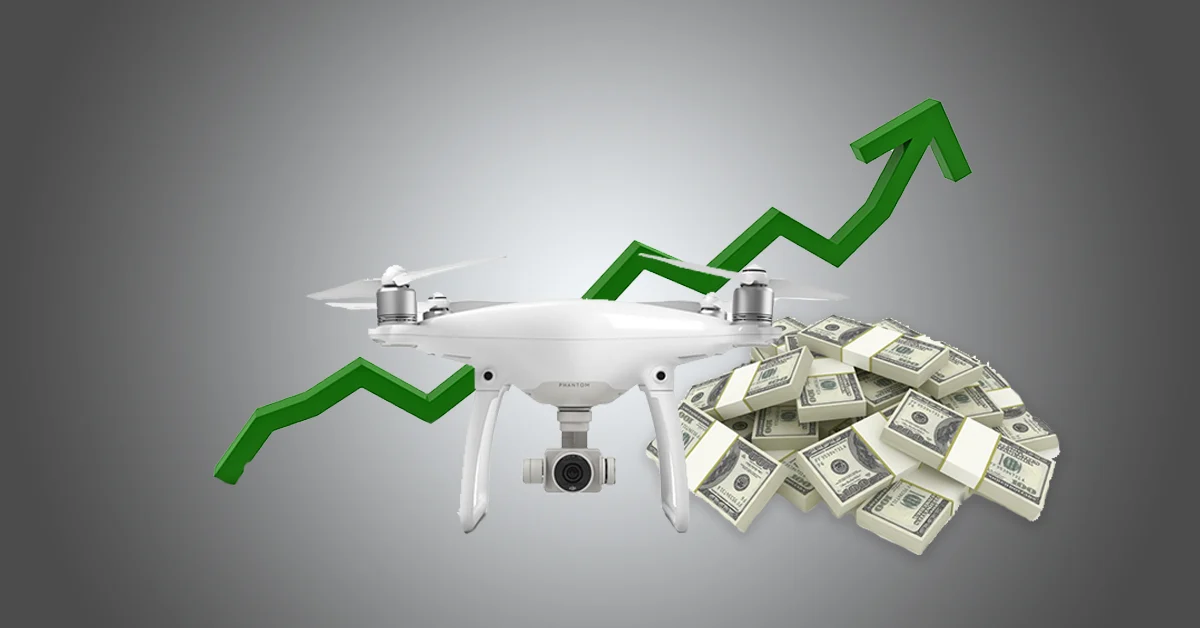Introduction
With the increasing popularity and legalization of marijuana in many parts of the world, more and more people are looking for innovative ways to cultivate their own supply of high-quality weed. Traditional cultivation methods often require a dedicated growing space, which can be cumbersome and expensive. However, there is an unconventional solution that is gaining traction among cannabis enthusiasts – growing weed in a PC case.
At first glance, it may seem like an odd pairing – a computer case and marijuana cultivation. But when you consider the advantages it offers, it starts to make sense. Growing weed in a PC case allows you to harness the power of modern computer technology to create a controlled environment for your plants.
The concept behind growing weed in a PC case is to repurpose the case as a customized grow box. The design and layout of a typical PC case provide the perfect foundation for creating an enclosed and ventilated space that can accommodate the specific needs of marijuana plants.
In this article, we will explore the benefits of growing weed in a PC case, how to choose the right case and components, setting up the grow space, and all the other factors that come into play when embarking on this unique cultivation method. So, if you’re ready to dive into the intriguing world of growing weed in a PC case, let’s get started!
The Benefits of Growing Weed in a PC Case
Growing weed in a PC case offers several unique benefits that make it an attractive option for both seasoned cultivators and beginners alike. Let’s take a closer look at some of the key advantages:
- Space Efficiency: One of the main advantages of growing weed in a PC case is the space-saving aspect. PC cases are compact and designed to maximize the utilization of space. This makes them ideal for those with limited room or for individuals who prefer a discreet cultivation setup.
- Cost-Effectiveness: Compared to traditional grow tents or elaborate setups, growing weed in a PC case can be a cost-effective solution. PC cases are readily available and often more affordable than specialized grow equipment. Additionally, since a PC case is repurposed, you can save money on constructing a separate grow space.
- Controlled Environment: The design of a PC case allows for easy customization, which means you can create a controlled environment for your marijuana plants. With proper ventilation, lighting, and temperature control, you can optimize the conditions needed for healthy plant growth. The ability to monitor and adjust these factors leads to greater control over the quality and yield of your harvest.
- Discreetness: Growing weed in a PC case offers a level of discretion that is hard to achieve with traditional cultivation methods. The compact size and unassuming appearance of a PC case allows you to blend in with other computer hardware, making it less likely to attract attention. Whether you live in a legal or non-legal region, this discreetness can be advantageous for maintaining privacy.
- Learning Experience: Growing weed in a PC case can be a fun and educational experience. It allows you to experiment with different cultivation methods, learn about the nuances of plant care, and develop your own techniques. Additionally, the process of repurposing a PC case for marijuana cultivation combines technology and horticulture, providing a unique opportunity to bridge these two worlds.
These benefits make growing weed in a PC case an intriguing option for those looking to cultivate their own marijuana plants. From the space-saving design to the opportunity for customization and control, this unconventional method offers a range of advantages that can enhance your growing experience.
Choosing the Right PC Case for Growing Weed
When it comes to growing weed in a PC case, selecting the right case is crucial for creating an optimal growing environment. Here are some key factors to consider when choosing the right PC case for your marijuana cultivation:
- Size and Dimensions: The size and dimensions of the PC case will determine the amount of space you have available for your plants. Consider the height, width, and depth of the case to ensure it can accommodate the desired number of plants and the necessary equipment, such as lights, fans, and ventilation systems.
- Material and Durability: Look for a PC case made of sturdy and durable materials. Steel or aluminum cases are often preferred for their strength and ability to withstand the weight and heat generated by various components. Avoid cases made from flimsy or low-quality materials, as they may not provide the necessary structural support.
- Cable Management: Good cable management is essential to keep your setup organized and maintain proper airflow. Look for a PC case that offers ample space and routing options for cables. Built-in cable management features, such as cable tie points and routing channels, can greatly simplify the process of managing cables and preventing tangling or obstruction of airflow.
- Ventilation and Airflow: Proper ventilation and airflow are crucial for maintaining a healthy growing environment. Look for a PC case that offers ample ventilation options, such as fan mounting points or mesh panels. Additionally, consider the placement of air intake and exhaust vents to ensure efficient airflow throughout the case.
- Noise Reduction: Some PC cases come with noise-reducing features, such as sound-dampening foam or specialized fan mounts. These features can help minimize the noise generated by fans and other components, making it easier to maintain a quiet growing environment. If noise is a concern for you, consider opting for a case with built-in noise reduction capabilities.
- Accessibility: Accessibility is important for easy monitoring and maintenance of your plants. Look for a PC case with removable panels or hinged doors that allow for convenient access to the interior. This will make it easier to make adjustments, check on the plants, and perform routine maintenance tasks without causing disruption or damage to the setup.
By carefully considering these factors, you can find a PC case that meets your specific needs for growing weed. Remember to prioritize functionality, durability, and customization options to create an ideal environment for your marijuana plants.
Selecting the Right Components for Your PC Case
Choosing the right components for your PC case is crucial for creating an efficient and effective setup for growing weed. Here are some key components to consider:
- Lighting: High-quality lighting is essential for the growth and development of marijuana plants. Consider using LED grow lights, as they are energy-efficient, emit low heat, and can be easily customized for different stages of plant growth. Look for lights with a full spectrum of colors to provide the right wavelengths needed for optimal photosynthesis.
- Ventilation and Fans: Proper airflow and ventilation are crucial for maintaining an optimal growing environment. Invest in fans and ventilation systems that can ensure adequate air exchange and reduce the risk of mold or mildew. Consider using fans with adjustable speeds to control the airflow based on the specific needs of your plants.
- Air Filtration: To maintain clean and odor-free air in your grow space, it’s important to invest in a reliable air filtration system. Carbon filters are commonly used to eliminate unwanted odors associated with marijuana cultivation. Ensure that the filtration system is suitable for the size of your PC case and can effectively remove odors and purify the air.
- Temperature and Humidity Control: Maintaining the optimal temperature and humidity levels is crucial for the health and growth of your plants. Use a thermostat or hygrometer to monitor and control the temperature and humidity inside the PC case. Consider investing in a separate heater or dehumidifier if necessary to create the ideal environment for your plants.
- Watering and Nutrient Systems: Providing the right amount of water and nutrients is vital for the success of your marijuana plants. Consider using a hydroponic system or drip irrigation system to deliver water and nutrients directly to the roots. Additionally, invest in high-quality nutrients specifically formulated for cannabis cultivation to ensure optimal growth and yield.
- Monitoring and Control Systems: To maintain a well-regulated growing environment, consider investing in a monitoring and control system. This can include temperature and humidity controllers, light timers, pH meters, and nutrient monitors. These systems can help automate the monitoring and control processes, allowing you to adjust environmental factors as needed for optimal plant growth.
When selecting components, it’s important to ensure compatibility with your PC case and consider the specific needs of your plants. Researching and investing in high-quality components will help create an efficient and effective setup for your marijuana cultivation.
Setting Up the Grow Space in Your PC Case
Creating a suitable grow space within your PC case is a crucial step in growing weed successfully. Here are the key steps to set up your grow space:
- Prepare the PC Case: Start by cleaning and preparing the PC case for your grow space. Remove any unnecessary components or obstructions to make room for your plants and equipment. Ensure that the case is properly ventilated and has suitable cable management options.
- Install Lighting: Mount the LED grow lights inside the PC case, ensuring they are positioned at the optimal height and angle for even light distribution. Follow the manufacturer’s instructions to connect the lights to the power source. Consider using reflective materials or walls within the case to maximize light reflection and coverage.
- Set Up Ventilation: Install fans and ventilation systems to ensure proper airflow within the grow space. Place fans strategically to create an even distribution of fresh air and to prevent stagnant pockets. Install carbon filters to eliminate odors and maintain a discreet cultivation setup.
- Position Watering and Nutrient Systems: Set up your chosen watering and nutrient delivery systems, such as a hydroponic setup or drip irrigation system. Place water reservoirs, pumps, and nutrient containers within the PC case, ensuring they are easily accessible for monitoring and maintenance.
- Control Temperature and Humidity: Install temperature and humidity control systems, such as heaters or dehumidifiers, if necessary. Connect them to appropriate sensors and timers for automated control. Place the sensors in strategic areas to accurately monitor temperature and humidity levels within the grow space.
- Arrange Plant Containers: Choose suitable containers or pots for your marijuana plants and arrange them within the PC case. Ensure that there is enough space between plants for proper air circulation and light penetration. Consider using techniques such as training and pruning to maximize space and optimize plant growth.
- Monitor and Adjust: Regularly monitor and adjust environmental factors, such as temperature, humidity, light cycles, and nutrient levels, to provide the best growing conditions for your plants. Use monitoring equipment and control systems to maintain optimal conditions throughout the growth cycle.
Setting up the grow space in your PC case requires careful planning and attention to detail. By following these steps, you can create an efficient and effective environment for growing weed while utilizing the space-saving benefits of a PC case.
Lighting Considerations for Growing Weed in a PC Case
Selecting the right lighting is crucial for successfully growing weed in a PC case. Proper lighting ensures that your marijuana plants receive the necessary energy for photosynthesis and healthy growth. Here are some important lighting considerations to keep in mind:
- LED Grow Lights: LED (Light Emitting Diode) grow lights are highly recommended for growing weed in a PC case. They are energy-efficient, produce low heat, and provide a full spectrum of light that closely mimics natural sunlight. LED lights are also durable and can last for many years, making them a cost-effective and long-term investment for your cultivation setup.
- Light Spectrum: Marijuana plants require different wavelengths of light for different stages of growth. During the vegetative stage, plants benefit from blue spectrum light, which promotes leaf and stem development. During the flowering stage, plants need more red spectrum light to stimulate bud production. Look for LED grow lights that offer a customizable spectrum or a full spectrum with adjustable settings to cater to the specific needs of your plants at each stage.
- Light Intensity: The intensity of light is essential for healthy plant growth. Make sure that the LED grow lights you choose have appropriate intensity levels for the size and height of your PC case. Adjust the light intensity based on the stage of growth and the specific light requirements of your marijuana strain. Keep in mind that too much light intensity can cause light burn or heat stress, while too little intensity may result in weak or stretched plants.
- Light Distance: The distance between your LED grow lights and the top of your plants is crucial to ensure optimal light absorption without causing damage. During the early stages of growth, place the lights closer to the plants to encourage compact and vigorous growth. As the plants grow taller, gradually increase the distance to prevent light burn. Regularly monitor the distance and make adjustments as necessary to maintain a balance between light penetration and avoiding heat stress.
- Lighting Schedule: Marijuana plants require a specific lighting schedule to mimic natural sunlight and regulate their growth cycles. During the vegetative stage, provide 18-24 hours of light per day. When transitioning to the flowering stage, reduce the light exposure to 12 hours per day to stimulate bud development. Use a timer to automate the lighting schedule and maintain consistency for your plants.
- Reflective Surfaces: To maximize light distribution and avoid wasted energy, consider lining the interior of your PC case with reflective materials. Reflective surfaces, such as Mylar or white-painted walls, help bounce light back onto the plants, ensuring better light penetration and coverage. This can enhance the overall efficiency of your lighting setup and improve plant growth.
By carefully considering these lighting considerations, you can create an optimal lighting setup for your marijuana plants in a PC case. Remember to cater to the specific light spectrum, intensity, distance, and schedule requirements at each stage of growth to promote healthy and robust plant development.
Ventilation and Airflow for Optimal Plant Growth
Proper ventilation and airflow are crucial for optimal plant growth when growing weed in a PC case. Good ventilation helps to remove stale air, control humidity levels, and provide a steady supply of fresh air to the plants. Here are some key considerations for ventilation and airflow in your PC case grow setup:
- Fans and Exhaust Systems: Install fans inside the PC case to promote air circulation. Position them strategically to create an even distribution of airflow. One or more fans can be used as intake fans to bring fresh air into the case, while exhaust fans expel stale air and heat generated by the lights and other components. Choose fans with adjustable speeds to control the intensity of airflow.
- Air Intake and Exhaust Points: Ensure that your PC case has suitable air intake and exhaust points. These can be pre-made ventilation holes or panels that allow for proper airflow. Consider adding filters to the intake ports to prevent dust and pests from entering the grow space. Place the exhaust fan near the top of the case to effectively remove hot air and maintain an ideal temperature.
- Carbon Filters for Odor Control: To prevent the distinct smell of marijuana from escaping your grow space, install carbon filters as part of the ventilation system. Carbon filters effectively neutralize odors and ensure a discreet cultivation setup. Position the filters in the airflow path between the plants and the exhaust fan for maximum efficiency.
- Air Movement: Proper air movement within the PC case is crucial for healthy plant growth. The gentle movement of air prevents stagnant pockets and helps to strengthen the stems of the plants. Use oscillating fans to create a gentle breeze that mimics natural outdoor environments. Adjust the position and speed of the fans to promote even air distribution without causing excessive plant movement.
- Monitoring and Controlling Humidity Levels: Maintaining the right humidity levels is essential for preventing mold and mildew growth while promoting healthy plant transpiration. Use a hygrometer to monitor the humidity levels inside the PC case. If the humidity is too high, consider using a dehumidifier or adjusting the ventilation to increase airflow and decrease humidity. If the humidity is too low, consider adding a humidifier or placing trays of water to increase moisture in the air.
- Cooling and Heat Dissipation: The lights and other components in the PC case can generate heat, which needs to be properly dissipated. Ensure that the exhaust fans effectively remove hot air from the case. Consider adding additional cooling mechanisms such as heatsinks, heat pipes, or even liquid cooling if necessary. Monitor the temperature inside the case using a thermometer and make adjustments to maintain an optimal temperature range for your plants.
By carefully considering ventilation and airflow in your PC case grow setup, you can create an environment that promotes optimal plant growth and reduces the risk of mold, pests, or other problems associated with poor air circulation. Regularly monitor and adjust the ventilation system to ensure proper airflow and maintain a healthy growing environment for your marijuana plants.
Watering and Nutrient Requirements for Your Marijuana Plants
Proper watering and nutrient management are essential for the healthy development and vibrant growth of your marijuana plants when growing them in a PC case. Here are some key considerations for watering and nutrient requirements:
- Watering: Marijuana plants require a consistent and appropriate water supply to thrive. Monitor the moisture levels in the growing medium regularly and water the plants when the top layer feels dry. Avoid overwatering, as it can lead to root rot and other problems. Use a watering can or a gentle irrigation system to ensure even distribution of water, avoiding excessive moisture accumulation in one area.
- Drainage: Good drainage is crucial to prevent waterlogged roots. Ensure that your plant containers have adequate drainage holes to allow excess water to escape. Use well-draining growing mediums, such as a mix of coco coir, perlite, and vermiculite, to promote proper root oxygenation and prevent water saturation.
- Nutrients: Marijuana plants require specific nutrients throughout their growth cycle. There are three primary macronutrients that are crucial for healthy plant development: nitrogen (N), phosphorus (P), and potassium (K). Use a high-quality nutrient solution specifically formulated for cannabis cultivation. Follow the manufacturer’s instructions and adjust the nutrient concentration based on the plant’s growth stage, as well as the unique needs of your marijuana strain.
- Feeding Schedule: Create a feeding schedule to ensure a consistent supply of nutrients to your marijuana plants. Start with a mild nutrient concentration during the vegetative stage and gradually increase the strength as the plants transition to the flowering stage. Be careful not to overfeed, as it can lead to nutrient burn or nutrient lockout. Monitor the plants for signs of deficiencies or excesses and make adjustments as necessary.
- pH Level: Monitor and adjust the pH level of your water and nutrient solution. The optimal pH range for marijuana plants is typically between 5.8 and 6.5. pH levels outside this range can affect nutrient absorption and lead to deficiencies or toxicities. Use a pH meter or pH testing kit to regularly measure and adjust the pH of your water and nutrient solution to ensure optimal nutrient uptake by the plants.
- Flush Period: To prevent nutrient buildup and maintain plant health, incorporate regular flush periods into your watering routine. During a flush period, water the plants with pH-balanced water to flush out any excess salts or nutrients that may have accumulated in the growing medium. Flushing helps maintain a clean root system and enables the plants to take up nutrients more effectively.
Proper watering and nutrient management are crucial for the overall health and productivity of your marijuana plants. By maintaining a balance between hydration and nutrient availability, you can ensure that your plants receive the necessary resources for vigorous growth, improved resin production, and enhanced terpene profiles.
Monitoring and Controlling Temperature and Humidity Levels
Monitoring and controlling temperature and humidity levels are vital aspects of growing weed in a PC case. Maintaining optimal environmental conditions ensures healthy growth, robust development, and prevents the risk of pest infestations or mold growth. Here are some key considerations for monitoring and controlling temperature and humidity levels:
- Temperature Range: Marijuana plants thrive within specific temperature ranges. During the vegetative stage, aim for temperatures between 70-85°F (21-29°C). When transitioning to the flowering stage, slightly lower temperatures to around 65-80°F (18-27°C). Invest in a reliable thermometer to monitor the temperature inside the PC case accurately.
- Cooling Mechanisms: If temperatures inside the PC case exceed the optimal range, consider incorporating cooling mechanisms. Increase ventilation or add cooling fans to circulate air and dissipate heat. Additionally, installing heat sinks or using liquid cooling solutions for your lights or other heat-emitting components can help in maintaining suitable temperatures.
- Humidity Levels: Maintaining appropriate humidity levels is crucial for healthy plant growth. During the vegetative stage, aim for humidity levels between 40-70%. For the flowering stage, slightly lower the humidity to about 40-50%. Use a hygrometer to monitor humidity levels within the PC case and make necessary adjustments to ensure an optimal environment for your plants.
- Dehumidifiers: If humidity levels are too high and pose a risk of mold or mildew, incorporate a dehumidifier to reduce excess moisture. Place the dehumidifier near the intake or in a central location within the PC case to extract the humid air effectively. Regularly empty and maintain the dehumidifier to prevent unwanted fluctuations in humidity levels.
- Humidifiers: If the humidity inside the PC case is too low, particularly in arid climates, using a humidifier can help increase moisture levels. Position the humidifier strategically to evenly disperse moisture throughout the growing area. Regularly monitor and adjust the humidifier’s settings to maintain the desired humidity level.
- Air Circulation: Maintaining adequate airflow and circulation within the PC case is essential for distributing heat evenly and preventing heat pockets or stagnant air. Place fans strategically to ensure air movement around the plants. This helps in maintaining consistent temperature and humidity levels while providing fresh CO2 to the leaves.
- Monitoring Systems: Consider using environmental monitoring systems to automate temperature and humidity control. These systems integrate sensors, controllers, and actuators to maintain stable conditions. With these systems, you can set specific temperature and humidity ranges and receive alerts if thresholds are exceeded, ensuring timely intervention to rectify any deviations.
Regularly monitor and make necessary adjustments to temperature and humidity levels to keep a stable and optimal growing environment for your marijuana plants. By maintaining suitable conditions, you can maximize plant health, growth, and ultimately achieve a flourishing and potent harvest.
Training and Pruning Techniques for Maximizing Yield
Implementing proper training and pruning techniques is crucial for maximizing the yield of your marijuana plants when growing in a PC case. These techniques help to shape and manipulate the plants’ growth, allowing for better light penetration, increased bud development, and overall improved productivity. Here are some key techniques to consider:
- Low Stress Training (LST): LST involves gently bending and tying down the plants’ branches to create horizontal growth. By positioning the branches to grow horizontally, LST allows for more even light distribution to lower branches, promoting their growth and bud development. Additionally, LST helps create an even canopy, maximizing the use of available space and increasing overall yield.
- Screen of Green (SCROG): SCROG involves using a net or screen to train the plants’ branches and create an even canopy. As the plants grow through the screen, the branches are tucked under the net, encouraging lateral growth and more bud sites. SCROG helps to maximize light exposure and increases the potential for larger yields by promoting an even distribution of energy to all bud sites.
- Topping: Topping involves removing the top growth of the main stem to encourage bushier growth. By cutting off the main stem’s top, the plant’s energy is redirected to the lateral branches, promoting their growth and increasing the number of colas. This technique helps create a more robust and uniform plant structure, maximizing the number of bud sites and overall yield.
- Defoliation: Defoliation refers to the selective removal of fan leaves, particularly those that block light penetration to lower bud sites. By strategically removing some of the large fan leaves, more light can reach the lower parts of the plant, stimulating growth in these areas. However, it’s important not to overdo defoliation, as the plant still relies on leaves for photosynthesis and energy production.
- Pruning: Pruning involves the removal of unnecessary or crowded branches or growth. By selectively pruning, you can enhance airflow and light exposure within the PC case, reducing the risk of mold or mildew development. Pruning also helps allocate the plant’s energy to more productive branches and encourages the growth of larger, higher-quality buds.
- Timing: Timing is crucial when implementing training and pruning techniques. Start training and pruning during the early vegetative stage when the plants are young and flexible. As the plants grow, continue to monitor and adjust their growth, ensuring that training and pruning techniques are implemented gradually and without causing stress to the plants.
When implementing these techniques, remember to approach them with care, observe the plants’ response, and make adjustments accordingly. Each plant may respond differently, so it’s important to assess and adapt your training and pruning techniques to the unique characteristics and growth patterns of your marijuana plants. By employing these techniques effectively, you can maximize the yield potential of your plants and achieve a bountiful harvest.
Common Pests and Diseases to Watch Out for
When growing weed in a PC case or any other cultivation setup, it is crucial to be aware of common pests and diseases that can potentially affect your marijuana plants. Detecting and addressing these issues early is essential to maintain plant health and maximize your yield. Here are some common pests and diseases to watch out for:
- Spider Mites: Spider mites are tiny pests that feed on the sap of your plants, causing yellowing leaves, webbing, and overall stunted growth. Monitor the undersides of leaves for mite presence and use organic insecticidal soap or neem oil to control their population.
- Aphids: Aphids are small, soft-bodied insects that cluster on the undersides of leaves and suck the sap from plants. They can cause distorted growth, yellowing leaves, and honeydew residue. Use insecticidal soap or neem oil to control aphid infestations.
- Fungus Gnats: Fungus gnats are small flying insects that lay their eggs in the growing medium. The larvae feed on the roots, causing damage and hindering plant growth. Use sticky traps and allow the soil to dry out between waterings to control the population.
- Powdery Mildew: Powdery mildew appears as a white or gray powdery growth on leaves, stems, and buds. It thrives in humid conditions and can affect the overall health and yield of your plants. To prevent powdery mildew, maintain proper airflow, reduce humidity levels, and consider using organic fungicides if necessary.
- Bud Rot (Botrytis): Bud rot is a fungal infection that primarily affects the buds of your plants. It usually appears as a gray or brown mold that develops in humid conditions or due to improper air circulation. Prevention is crucial, so ensure proper ventilation and remove any affected buds immediately to prevent the spread of the infection.
- Root Rot: Root rot is caused by overwatering, leading to excessive moisture and lack of oxygen in the root zone. It can cause yellowing leaves, stunted growth, and plant wilting. To avoid root rot, ensure proper drainage, avoid overwatering, and maintain a well-balanced watering schedule.
- Nutrient Deficiencies/Toxicities: Insufficient or excessive nutrients can lead to nutrient deficiencies or toxicities, affecting plant growth and development. Monitor nutrient levels and pH balance carefully, follow proper feeding guidelines, and adjust nutrient concentrations as necessary to maintain healthy nutrient uptake by the plants.
Regularly inspect your marijuana plants for signs of pests or diseases, such as discoloration, wilting, unusual spots, or presence of pests. Implement preventive measures, such as maintaining proper airflow, practicing good hygiene, and monitoring environmental conditions. Early detection and prompt action are key to mitigating the impact of pests and diseases, ensuring robust growth, and ultimately achieving a successful harvest.
Harvesting and Storing Your Homegrown Weed
After weeks of hard work and dedication, it’s time to reap the rewards of your homegrown weed. Harvesting and storing your cannabis correctly will ensure the preservation of potency, flavor, and aroma. Here are some key steps to follow:
- Determining the Right Time: Harvesting at the right time is crucial for maximizing potency and yield. Pay attention to the trichomes – small resinous glands on the buds – using a magnifying tool. Harvest when the trichomes are mostly milky white with a few amber-colored ones for a more cerebral effect. For a more relaxing and sedative effect, wait until most trichomes turn amber.
- Cutting and Trimming: Using clean, sharp pruning shears, cut the branches with the mature buds. Remove large fan leaves and trim the sugar leaves (small leaves covered in trichomes) close to the buds. Proper trimming helps improve aesthetics and enhances the overall smoking or vaping experience.
- Drying: Hang the trimmed branches upside down in a dark, well-ventilated area with moderate humidity. Ensure there is enough space between branches to allow for proper airflow. Maintain a temperature of around 60-70°F (15-21°C) and a humidity level of 45-55% during the drying process. This typically takes around 7-10 days, with smaller buds drying faster than larger ones.
- Curing: After drying, it’s essential to cure the buds to further enhance their flavor, aroma, and smoothness. Place the dried buds in glass jars, filling the jars about 75% full. Store the jars in a cool, dark place and open them for a few minutes daily to release excess moisture. This process typically takes 2-4 weeks, with regular opening and closing of the jars to ensure proper curing.
- Storage: Once the buds are properly cured, store them in airtight glass jars, away from light, heat, and air. For longer-term storage, consider using a vacuum-sealed container or a humidity-controlled storage solution. Store the jars in a cool, dark place, such as a basement or refrigerator, to maintain freshness and potency.
- Labeling: It’s recommended to label your stored weed with information such as strain name, harvest date, and any other relevant details. This allows you to keep track of your different strains and ensures that you can identify and enjoy your stored buds correctly.
- Testing: If desired, consider sending a sample of your homegrown harvest to a reputable testing facility for cannabinoid and terpene analysis. This can provide valuable insights into the potency and profile of your cannabis.
Remember, patience is key throughout the harvesting and storing process. Properly dried and cured buds will reward you with enhanced flavors, aromas, and a smoother smoking experience. Take pride in your homegrown weed and savor the fruits of your labor.
Conclusion
Growing weed in a PC case may seem unconventional, but it offers numerous benefits for cultivating your own marijuana supply. By repurposing a PC case, you can create a compact and controlled environment that maximizes space and promotes optimal plant growth. Selecting the right case, components, and implementing proper techniques and methods are essential for success.
We explored the benefits of growing weed in a PC case, such as space efficiency, cost-effectiveness, and the ability to create a discreet setup. We also discussed the importance of choosing the right PC case and components, including lighting, ventilation, and monitoring systems. Proper lighting, ventilation, and humidity control are crucial for maintaining a healthy growing environment.
Moreover, we delved into the significance of training and pruning techniques to maximize yield, as well as monitoring and controlling temperature, humidity, and nutrient levels. Additionally, we highlighted common pests and diseases to watch out for and the steps to harvest and store your homegrown weed properly.
Growing weed in a PC case can be a rewarding and exciting experience. It combines technology and horticulture to create a unique cultivation setup. Whether you are a seasoned cultivator or a beginner, the knowledge and insights shared in this article will serve as a valuable guide along your journey.
Remember, always prioritize responsible and legal cultivation practices. Ensure compliance with local laws and regulations regarding marijuana cultivation and consumption. Happy growing!

























